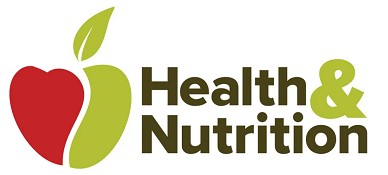Pain is the first reason for consultation but also the least well treated pathology. 70% of patients do not receive appropriate treatment. The various analgesics have a limited action and side effects. The latest advances, such as neurostimulation or pepper capsules, are alternatives advocated by Marc Lévêque, neurosurgeon and pain specialist in Marseille.
As soon as we touch her arm she jumps. All the left body of Alix is only suffering, “ from head to toes ”, she specifies, discouraged. “ I feel like tingling which at times turns into discharges ”. It is difficult for him to describe his pain precisely, but the intensity, yes. She is unbearable. This nurse on sick leave has endured it since 2014. Since her fall on a rock one fine morning in January, which revealed a benign brain tumor. A part could be extracted but remains this pain which handicaps her on a daily basis.
“Pain is an unpleasant sensory and emotional experience associated with actual or potential tissue damage or described in these terms” – Ministry of Health and Solidarity .
Alix is one of the 12 million French people suffering from chronic pain and of the 70% who say they are insufficiently relieved. After years of wandering and suffering, she is now followed in a pain center in the Paris region. It was her neurologist who, seeing that her pain was not going away, directed her. This 50-year-old had to wait eight months. However, she belongs to ” the worst cases because her pain is in the hemibody (half of the body, editor’s note)”, says Marc Lévêque , neurosurgeon and pain specialist in Marseille.
According to this affable man, there are 300 pain centers in France. But only 3% of patients suffering from chronic pain are taken care of there. ” The centers are saturated and lack resources ” , he underlines indignantly. Other factors explain this finding. Pain is still not recognized “as a medical specialty”. And, while ” the first reason for consultation in general medicine concerns pain and we are moving towards a society where no one will be spared” , only a few hours on the subject are taught to medical students.
Indeed, pain is information sent by our body to warn of a dysfunction. And which goes up through the spinal cord to the brain where it is processed. His understanding of the phenomenon will condition his interpretation of pain
The problem with the analgesic molecules taken by Sabine is their undesirable effects. By acting on the brain, the patient may have the impression ” of no longer being him, of being next to his pumps, in slow motion “, deciphers the pain specialist who tested an antidepressant, once on vacation, to ” take the measure of its effects “. Conclusion, a single take was enough for him to feel “ cushioned ” all day.
This pharmacopoeia has other long-term consequences – on cognition, concentration, libido or weight gain .
Faced with the side effects of molecular analgesics, even though their effectiveness is limited, it is urgent according to Marc Lévêque to get out of their systematic prescription . And to propose solutions that preserve the faculties of the individual. For example, pepper patches or the injection of botulinum toxin which, locally, “ blocks pain at the level of nerve receptors ”. Another technique is neuromodulation, the purpose of which is to “ disrupt the pain message ”.
Alix applies the TENS device, three times a day, to the entire left side of the body. Since benefiting from it, this mother of two children has experienced a rebirth, even if the beneficial effects are limited in time. Above all, his medications are less dosed. This had the effect of stopping his weight gain and his feeling of being next to the plate.
There are many other non-drug therapies that are scientifically validated and effective. Let’s mention Adapted Physical Activity (APA) – or more commonly known as ”sport on prescription”. But also hypnosis or music therapy which have ” undeniable analgesic effects because they mobilize other resources and help the patient to focus his attention on something else “, explains the neurosurgeon ( see bonus ). Finally, Cognitive Behavioral Therapy (CBT) helps the patient change their fears and beliefs. For example, ‘I have a bad back, I’m going to be paralyzed’ or ‘I have a bad back so I can’t move’” .
Marc Lévêque, also an author (his next book, on pain, will be published in February), does not, however, throw antidepressants, antiepileptics and morphine into nettles. He himself prescribes them to his patients, “ because they are less expensive and less invasive ”. But if their effectiveness proves to be low or if they are poorly tolerated, he stops the treatment.
Most non-drug therapies are provided in the pain centers where Marc Lévêque works – the Clairval and Bouchard hospitals in Marseille, and the CH in Aix-en-Provence. But, as we have seen previously, given the saturation of the centres, access to these techniques “ with desirable effects ” is limited or remains the responsibility of the patients.

